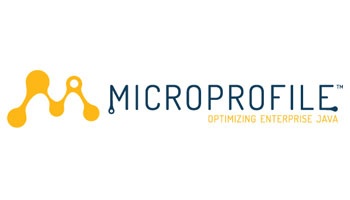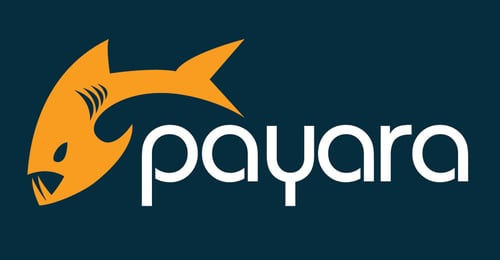Archive from April 2018
4 Production Features in Payara Server 5 You Might Not Know About
Published on 30 Apr 2018
by Mike Croft
Topics:
Payara Platform 5,
Payara Server,
Notifier
|
0 Comments
The Future of Cloud-Native, Open Source Java with Jakarta EE
Published on 24 Apr 2018
by Debbie Hoffman
Topics:
Java EE,
JakartaEE
|
0 Comments
It's here! The Eclipse Foundation has announced the future of Java EE with the release of Jakarta EE ; a cloud-native Java and an open source governance model. As enterprises modernize their infrastructure for cloud, microservices and containers, the technological transformation requires a new governance model that provides faster release cycles to keep pace with innovation, along with an open source, community-driven evolution of the platform.
Building Your Next Microservice With Eclipse MicroProfile
Published on 23 Apr 2018
by Ondro Mihályi
Topics:
Payara Micro,
Microservices,
MicroProfile
|
2 Comments
Administering Payara Server 5 with the CLI
Published on 18 Apr 2018
by Andrew Pielage
Topics:
CLI,
Payara Platform 5,
Payara Server
|
7 Comments
Now that Payara Server 5 is here, it’s a good time to brush up on the basics - with that in mind, I'm going to go through a few of the things you can do with the Payara Server CLI.
Virtual Servers in Payara Server
Published on 16 Apr 2018
by Matthew Gill
Topics:
Payara Server
|
3 Comments
Virtual servers are a common concept to developers familiar with configuring web servers like Apache HTTP or Nginx. A virtual server represents a placeholder for a physical Payara Server instance to be "visualized" as multiple instances at once, allowing to server requests for multiple domain names. Detailed information on virtual servers can be found in the official documentation for Payara Server.
How to Test Applications with Payara® Server & Micro with Arquillian
Published on 12 Apr 2018
by Andrew Pielage
Topics:
Payara Micro,
Arquillian,
Payara Server
|
4 Comments
Before putting any application out for public access, it’s always worth testing that it works how you expect it to (and also how you don’t expect it to!). Effective testing of applications is something you can spend a week being taught, but for this blog I’ll just cover the basics of running JUnit and TestNG tests against Payara® Server & Micro using Arquillian.
MicroProfile Metrics in Payara Micro
Published on 10 Apr 2018
by Kenji Hasunuma
Topics:
Payara Micro,
MicroProfile
|
4 Comments
One of the new features in Payara Server and Payara Micro 4.1.2.181 and 5.181 is full compatibility with MicroProfile 1.2. In this blog, I will introduce Metrics 1.0, a new API of MicroProfile 1.2 to use with Payara Micro (and Payara Server).
Webinar: What's in Store For EE4J, MicroProfile & Payara Server
Published on 09 Apr 2018
by Jadon Ortlepp
0 Comments
There are 2 major changes happening in the Java EE world that Payara is heavily involved in: MicroProfile – an industry collaboration to define microservices APIs on top of a subset of Java EE; and EE4J – the migration of Java EE from the JCP to the Eclipse Foundation. Also, since Payara 5 has been released, it has brought new and exciting capabilities, and the community versions of Payara Server & Payara Micro have switched from 4 to 5.
In this webinar presented on the 1st of March 2018, Steve Millidge (Payara Founder) and Mike Croft (Payara Head of Support) give an update on MicroProfile and EE4J, explaining the initiatives’ roadmaps, aims and objectives, and show code samples on how to use MicroProfile with Payara Server. They explained the Payara Server 2018 Roadmap and what the switch from Payara Server 4 to 5 means for Payara users.
Payara Tools Unlocks Eclipse For Payara 5
Published on 05 Apr 2018
by Arjan Tijms
Topics:
How-to,
Eclipse,
Payara Server 5,
Payara Platform 5
|
9 Comments
For a long time Payara, a derivative of GlassFish, could be used in Eclipse using the Oracle GlassFish Tools. With the release of Payara 5, a few problems prevented the plug-in from recognizing Payara 5, meaning Payara 5 couldn’t really be used in Eclipse. A new set of tools again makes it possible to use Payara 5 with Eclipse, along with other improvements.
Flexibility First - Payara Docker Images Allow a Completely Custom Start-up Configuration
Published on 03 Apr 2018
by Ondro Mihályi
Topics:
Docker,
Payara Server
|
6 Comments
We work hard to make Payara Server robust, reliable, and innovative so that it's perfect for production deployments. But we never forget about the users and developers. For them, we target flexibility and ease of use in every new feature we add and every tool in the ecosystem we maintain. Our Payara Docker images are an example of it and we're happy about the positive feedback from the user community we receive, as well as the constructive suggestions that help us improve user experience in the future.








